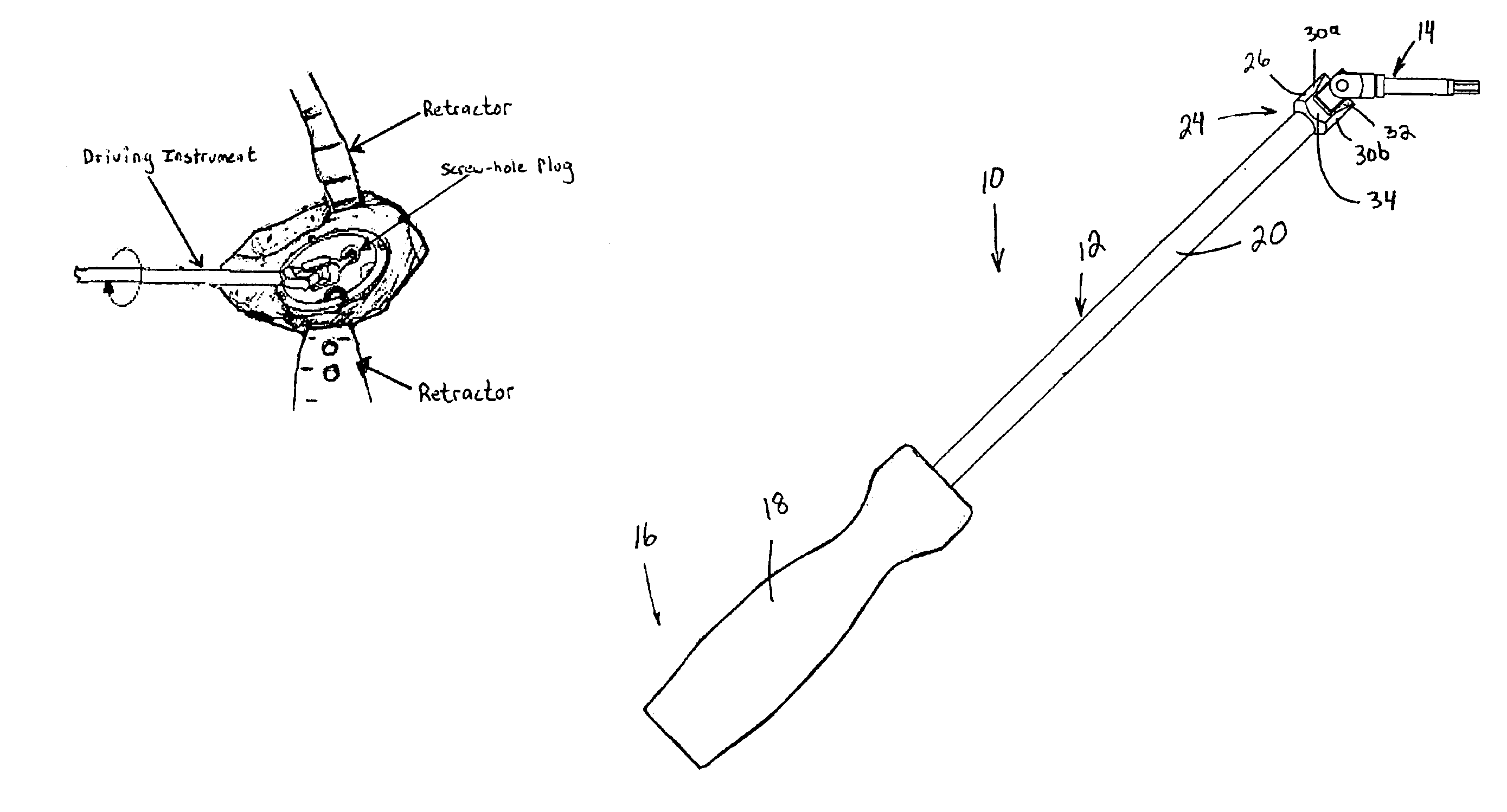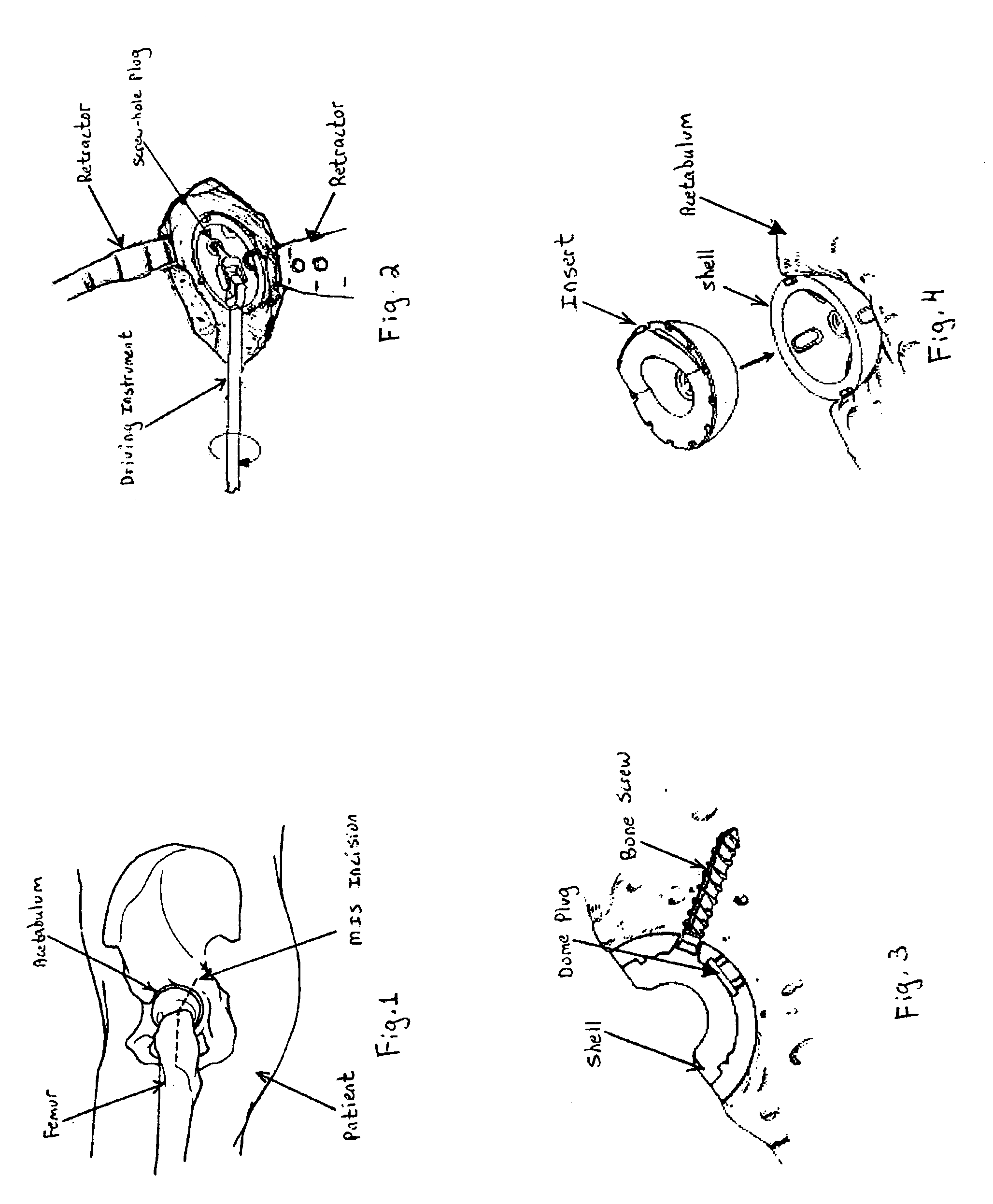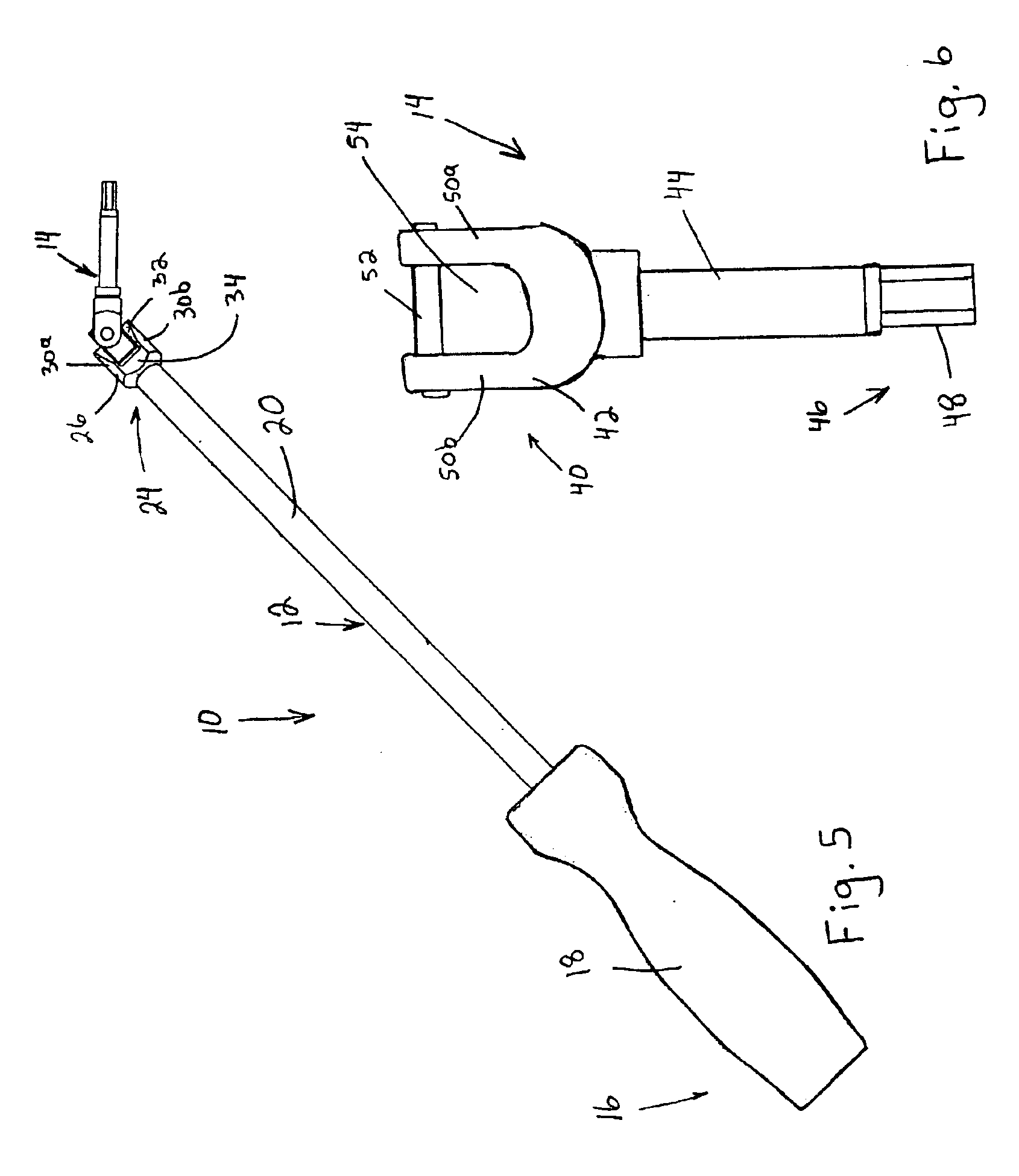One important
advantage of the present invention is that the method and driving instrument are used in a minimally invasive orthopedic
hip surgery. A single, small three to five inch incision is made at the
surgical site on the side on the hip. The method of the present invention, thus, enjoys the benefits of a shorter incision compared to traditional
hip surgery that uses a much longer incision. As one benefit, the patient can recover in a much shorter period of time after a MIS. The recuperation time in the hospital can be a few days and significantly reduce the cost to both the patient and hospital. This shortened time period is extremely important to the patient. Further, MIS is
less invasive and traumatic to the patient. Significantly less
soft tissue is disrupted in a minimally
invasive surgery compared to a traditional hip surgery. Also, the amount of
blood loss is reduced, and patients will require fewer blood transfusions. Further, the length of the scar is significantly smaller, and these
scars are more cosmetically appealing. The incisions themselves heal in a much shorter period of time and are much less painful than a long ten or twelve inch incision. As such, the patient can sooner
return to work or enjoy recreational activities. In short, the patient can more quickly return to a normal way of life.
is that the method and driving instrument are used in a minimally invasive orthopedic hip surgery. A single, small three to five inch incision is made at the
surgical site on the side on the hip. The method of the present invention, thus, enjoys the benefits of a shorter incision compared to traditional hip surgery that uses a much longer incision. As one benefit, the patient can recover in a much shorter period of time after a MIS. The recuperation time in the hospital can be a few days and significantly reduce the cost to both the patient and hospital. This shortened time period is extremely important to the patient. Further, MIS is
less invasive and traumatic to the patient. Significantly less
soft tissue is disrupted in a minimally
invasive surgery compared to a traditional hip surgery. Also, the amount of
blood loss is reduced, and patients will require fewer blood transfusions. Further, the length of the scar is significantly smaller, and these
scars are more cosmetically appealing. The incisions themselves heal in a much shorter period of time and are much less painful than a long ten or twelve inch incision. As such, the patient can sooner
return to work or enjoy recreational activities. In short, the patient can more quickly return to a normal way of life.
Another important
advantage of the present invention is that the driving instrument uses a variably angled joint connector. The driving instrument can drive a screw-hole plug or bone screw while the working section and driving section are at various angles to each other. The various angles between the working and driving sections and the size and shape of the driving instrument are specifically designed and adapted to be used in minimally invasive surgical techniques for aligning and driving screw-hole plugs and
bone screws into a prosthetic
acetabular shell.
Another important
advantage of the present invention is that the various angulations of the driving section of the driving instrument keep the
handle away from the entrance to the
surgical site. In MIS, it is particularly important to maintain a clear and unobstructed access to the surgical site since it is so small, measuring approximately 3-5 inches in length. Further, it is important not to disrupt or aggravate the sides of the wound channel during the surgical procedure. In the present invention, the
handle and working section extend outwardly and away from the sides of the surgical site. The instrument, thus, can be used without unnecessarily disrupting or aggravating the surgical site.
As a further advantage, the
handle and working section can be easily maneuvered through various angles around the surgical site while the driving section drives a screw-hole plug or bone screw into the
acetabular shell. The surgeon can manipulate or move the handle to obtain a desired angle for driving the screw-hole plugs and
bone screws. The handle, for example, can be moved to provide a better angle for driving the plug and screw or moved to provide a better angle for observing into the surgical site.
The driving instrument generally comprises a body having two primary sections, a working section and a driving section. The working section includes a handle at a proximal end and an elongated shaft connected to a working head portion at a distal end. The driving section has a driving head at a proximal end, a
drive shaft extending from the head, and a driving tip at a distal end. This driving tip is shaped and sized to engage a screw-hole plug or bone screw and carry this plug or screw to the acetabular shell embedded in the natural acetabulum. The screw or plug can then be driven into the acetabular shell with the driving instrument. A joint connector connects the working head of the working section to the driving head of the driving section. This joint enables the working section to rotate the driving section while the two sections are disposed at an angle with respect to each other. Preferably, the joint connector is U-joint connector that offers variable angulations between the working section and driving section. A driving guide may be attached to the driving tip of the driving section. The driving guide helps align and guide the driving instrument while a screw-hole plug or bone screw is inserted into the acetabular shell. The driving instrument is discussed in more detail with reference to the figures.
 Login to View More
Login to View More  Login to View More
Login to View More 


